Yunnan province, which borders Tibet in southwestern China, is home to a sizable population of ethnic Tibetans. Its city of Shangri-la (known as Zhongdian until authorities decided their fair city was surely the paradise described in the book Lost Horizon) also contains one of the most important Tibetan monasteries. Sumtseling Monastery (also known as Ganden Sumtseling Gompa, Songzanlin Scenic Area and Sōngzànlín Sì) was founded by the Fifth Dali Lama in 1679 and once housed 2,000 monks. Ravaged during China’s Cultural Revolution, the monastery was rebuilt in the 1980s and today is the domicile of around 700 monks. While I’ve never been to Tibet, I was struck by how much Sumtseling resembles photos of Potala Palace in Lhasa.
The monastery graces the top of a hill and sits within a walled village. An ornate entrance gate welcomes visitors at the base and 146 steps leads them to the top. With Shangri-la at an elevation of nearly 3,400 meters, this climb is more taxing than you might think. We gave ourselves a day to acclimatize and still had to stop several times on the way up.
About halfway to the top we came to Zhuo Kangcan, a Qing Dynasty temple built for monks from the Naxi tribe. Visitors are welcome, as are prayers for peace and good fortune, though, as with all the monastic buildings, photographs inside are forbidden.
The main temple consists of a central assembly hall dedicated to the Fifth Dalai Lama, and two smaller sanctuaries on each side. The massive assembly hall, with room for 1,500 monks to gather and worship, is accessed via a small door on the eastern side of the building. It’s really a shame that I don’t have photos to share of the inside, which was a riot of colors and candles. Rows upon rows of wooden benches covered with yellow and red cushions filled the central area, while an altar stretched across the rear length of the room. A jewel-encrusted, gilded Buddha image stood eight meters high and was surrounded by brightly painted deities and prayer flags. Murals depicting the life of Buddha covered the walls. While some aspects of the temple looked new and freshly painted, there were some genuine antiques on display as well. Religion is still a sensitive subject in China and I was surprised by how meticulously this temple had been restored, relative to some of the other rehabbed temples I’ve seen.
Down the stairs to the left is a smaller temple called Chatreng Khamtsen that was undergoing renovations at the time of our visit. The sparse front chamber held seemingly ancient bronze sculptures representing the twelve animals of the zodiac, though their display stands left something to be desired. A hallway painted with lovely murals led to a small but ornate temple and a workroom for the monks.
The natural setting of the monastery is stunning, with mountains on all sides and marshland in the valley below. A path has been built around the marsh and provides an excellent vantage point for viewing Sumtseling and the surrounding village. We received an unexpected thrill when a herd of Tibetan ponies crossed the path in front of us to grazed nearby. The air was crisp and cool, with the clouds parting to reveal beautiful blue skies. It was idyllic!
Sumtseling is located around five kilometers north of Shangri-la, about an hour’s walk from the old town. Another option is to take bus number 3 (one kuai each way) which runs along Changzheng Lu from old town to the monastery’s visitor center. From there a smaller bus transports visitors up to the main entrance gate. It is not advisable to walk from the visitor center up to the monastery as the road is narrow, winding and without sidewalks. Ladies, be sure to make use of the toilet at the visitor center as the one behind the assembly hall was even less appealing than usual for rural Chinese bathrooms. The entrance fee at the time of our visit was 115 RMB (around 19 USD).
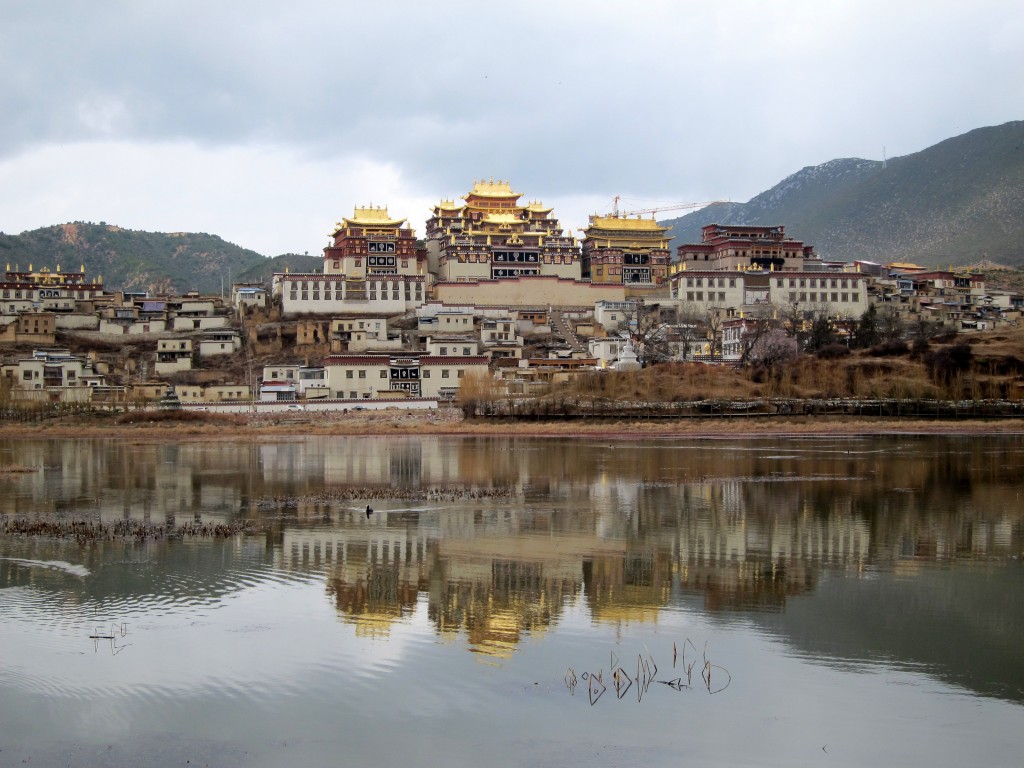
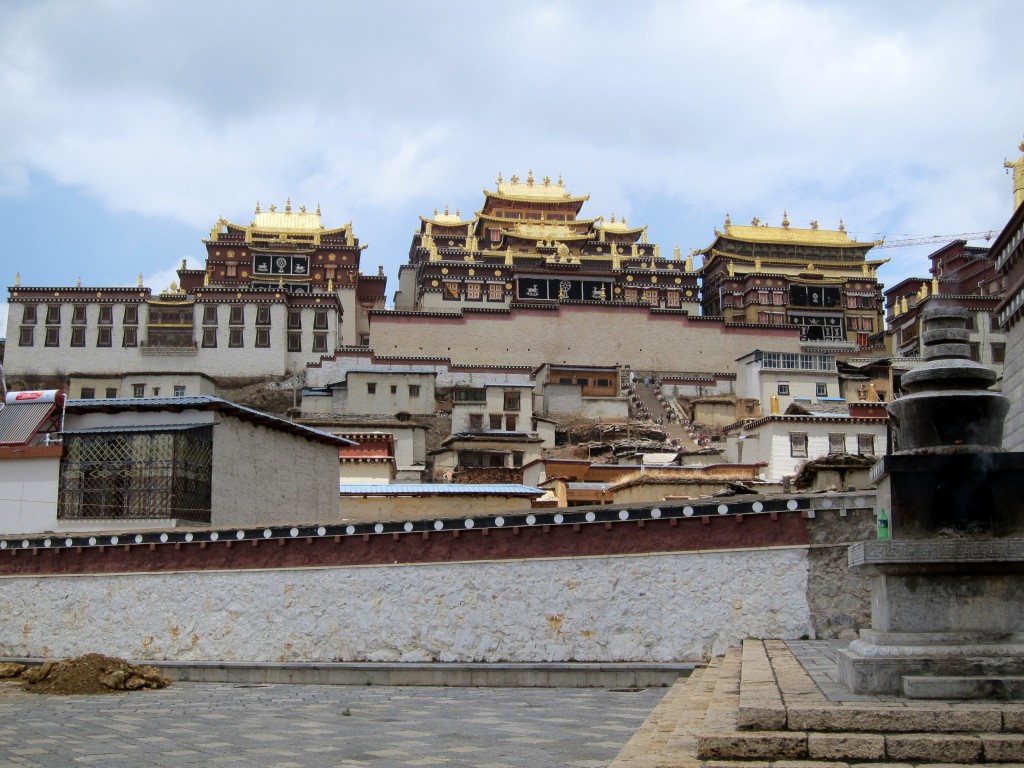
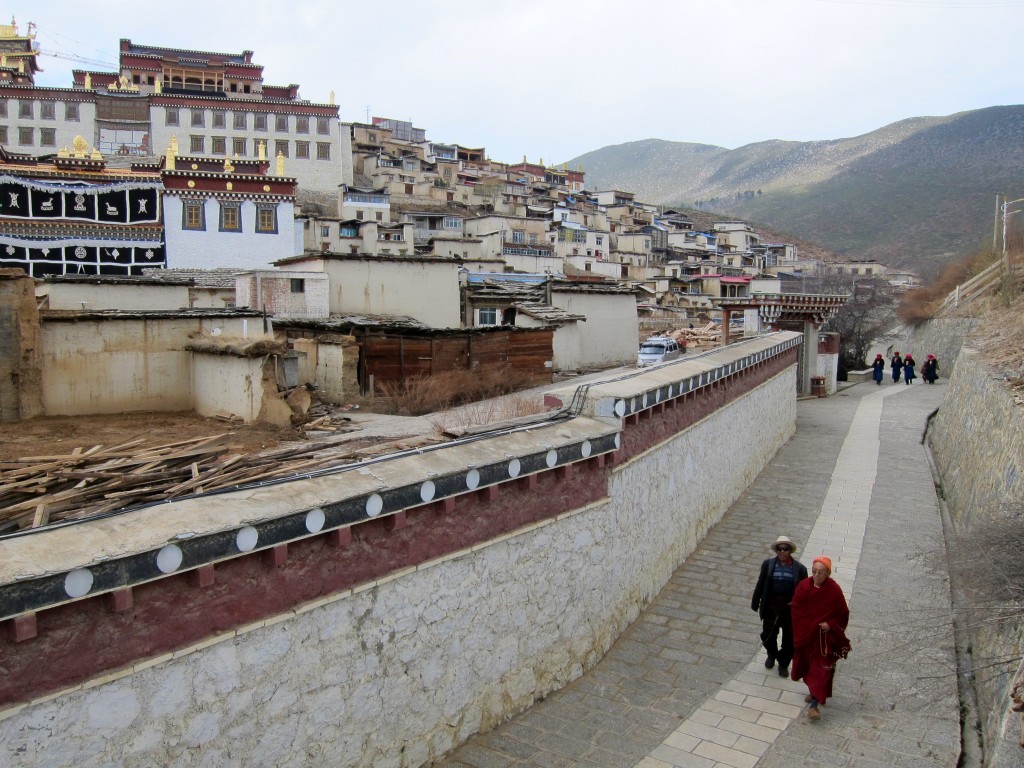
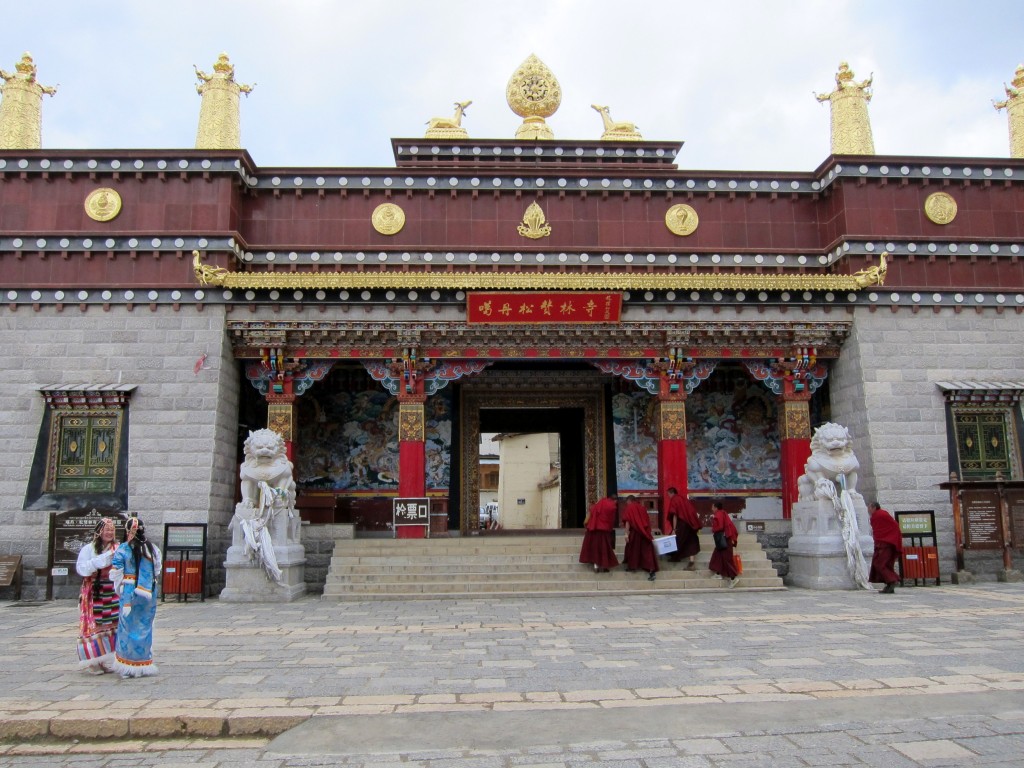
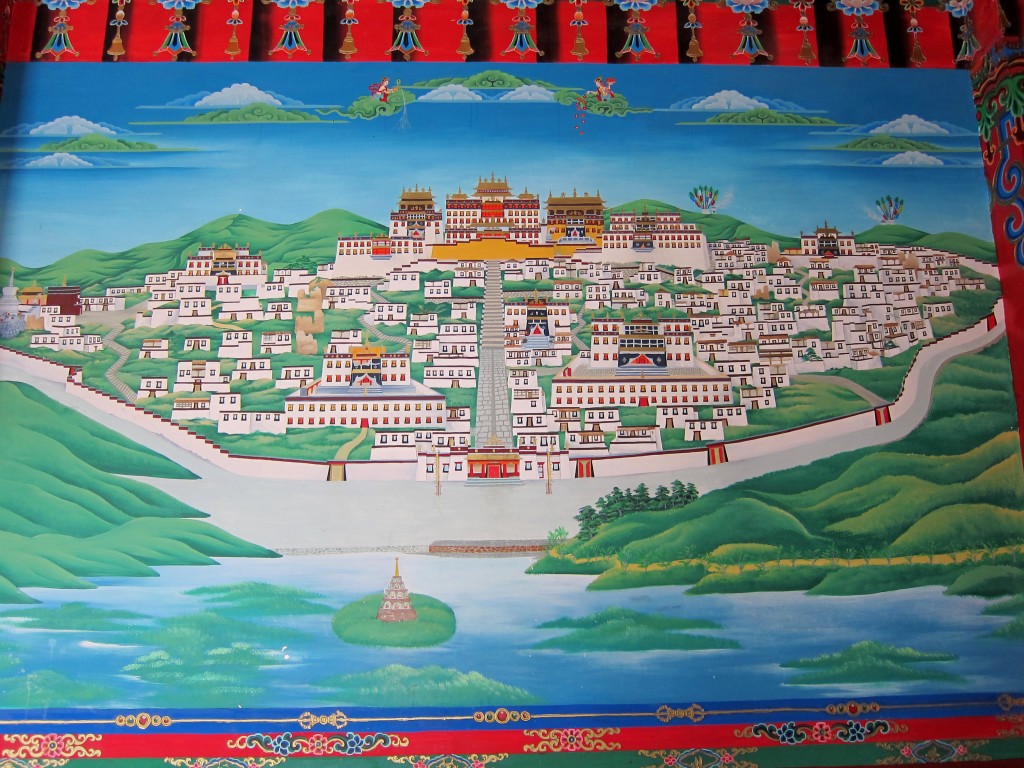
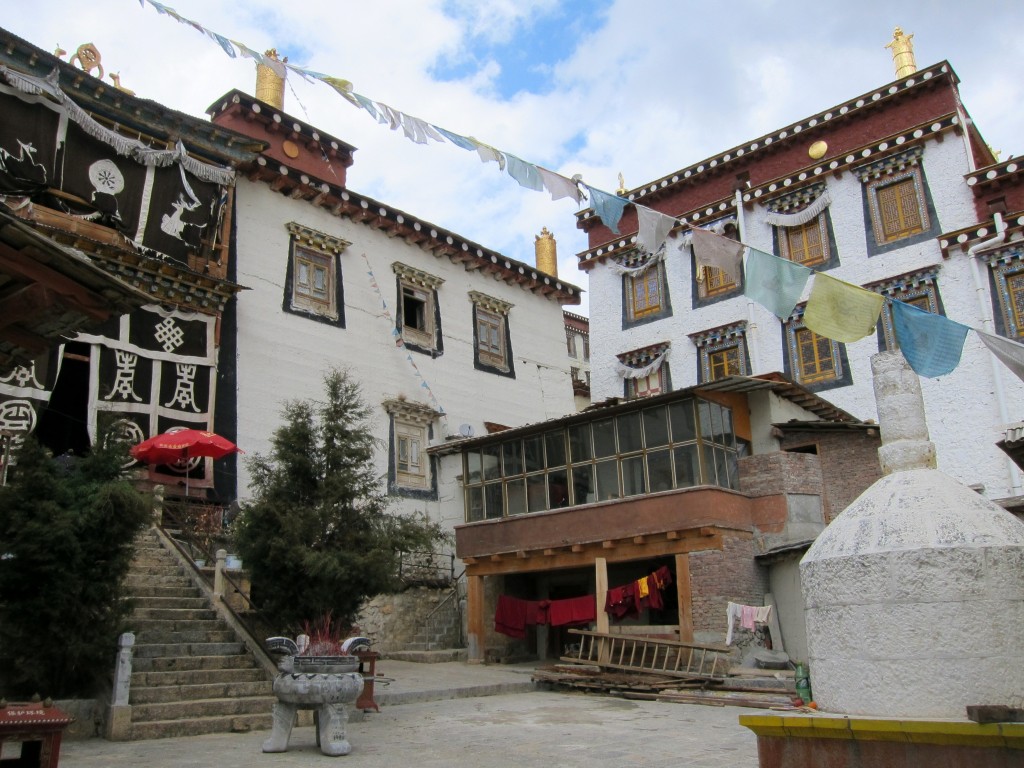
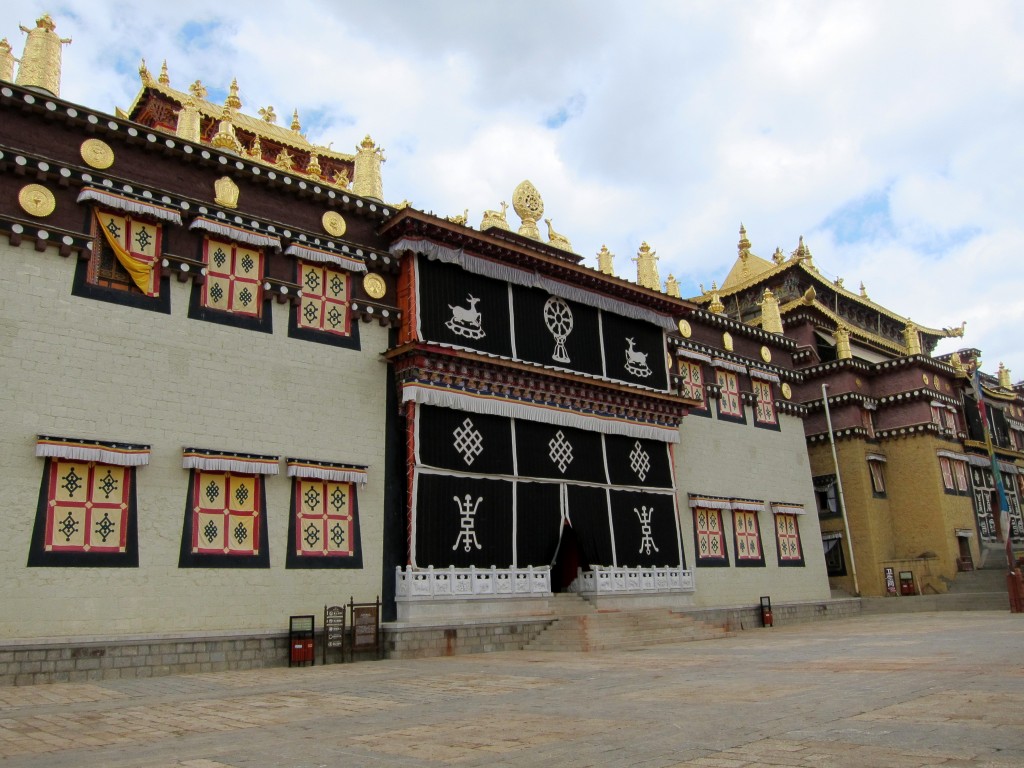
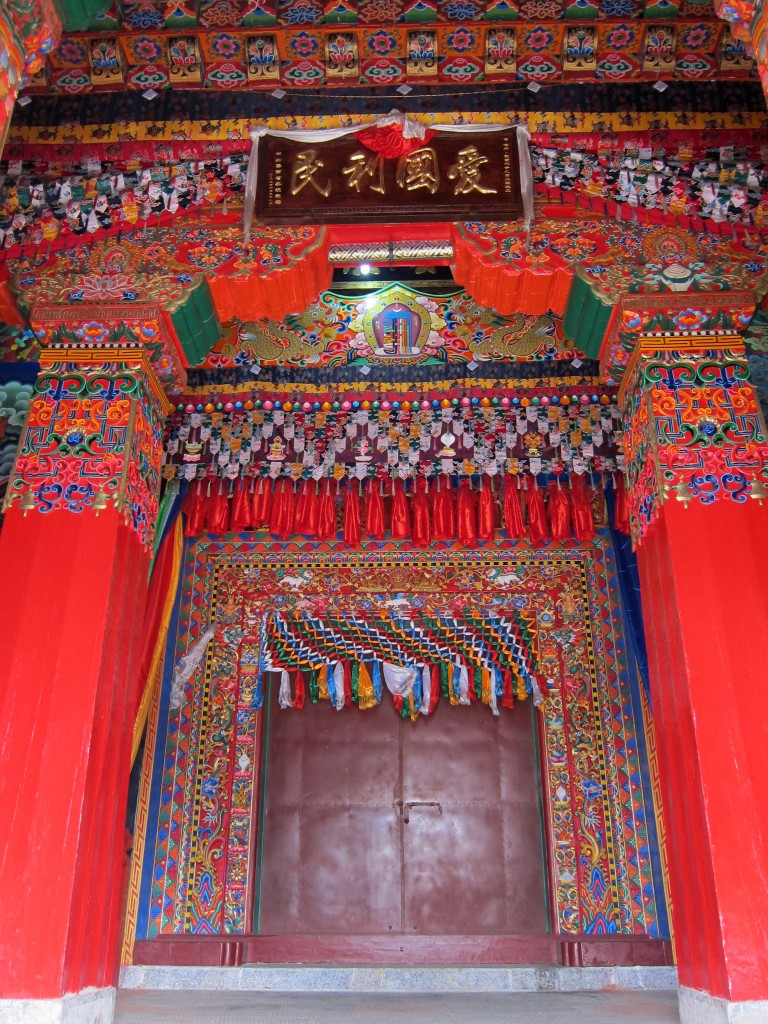
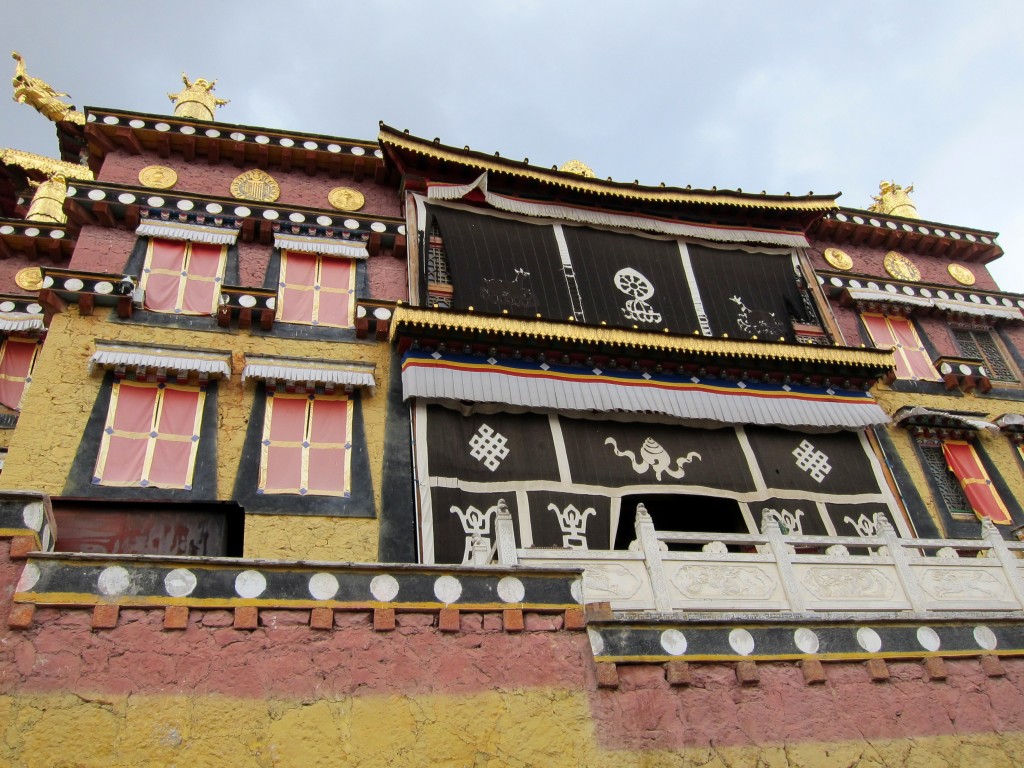
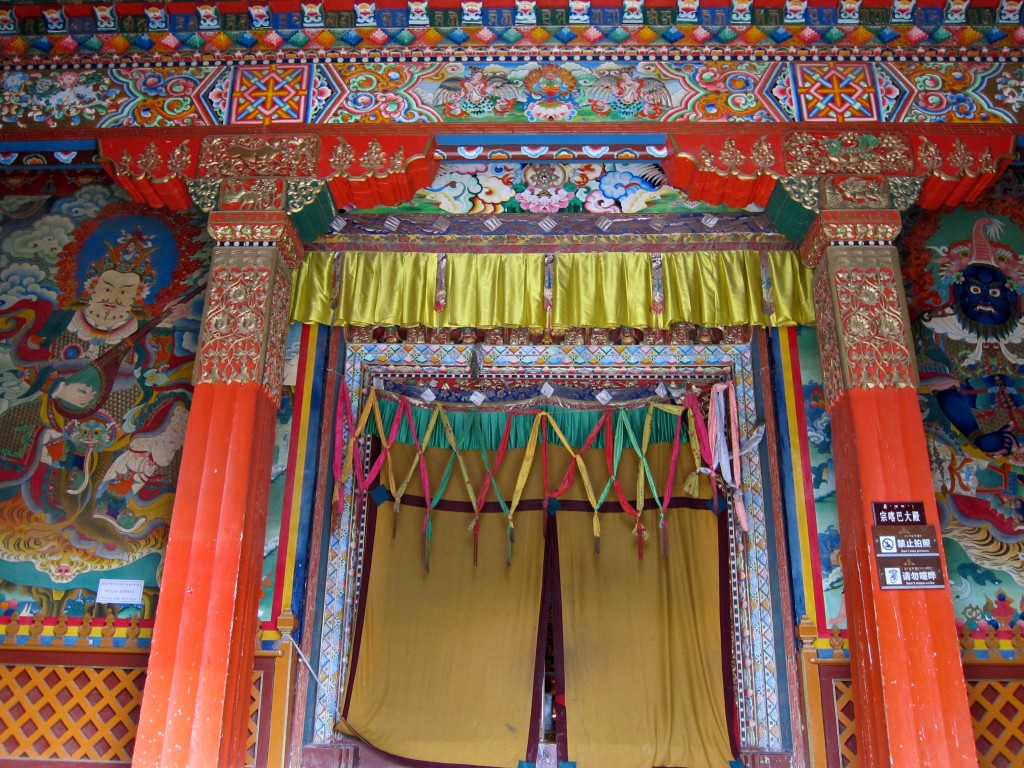
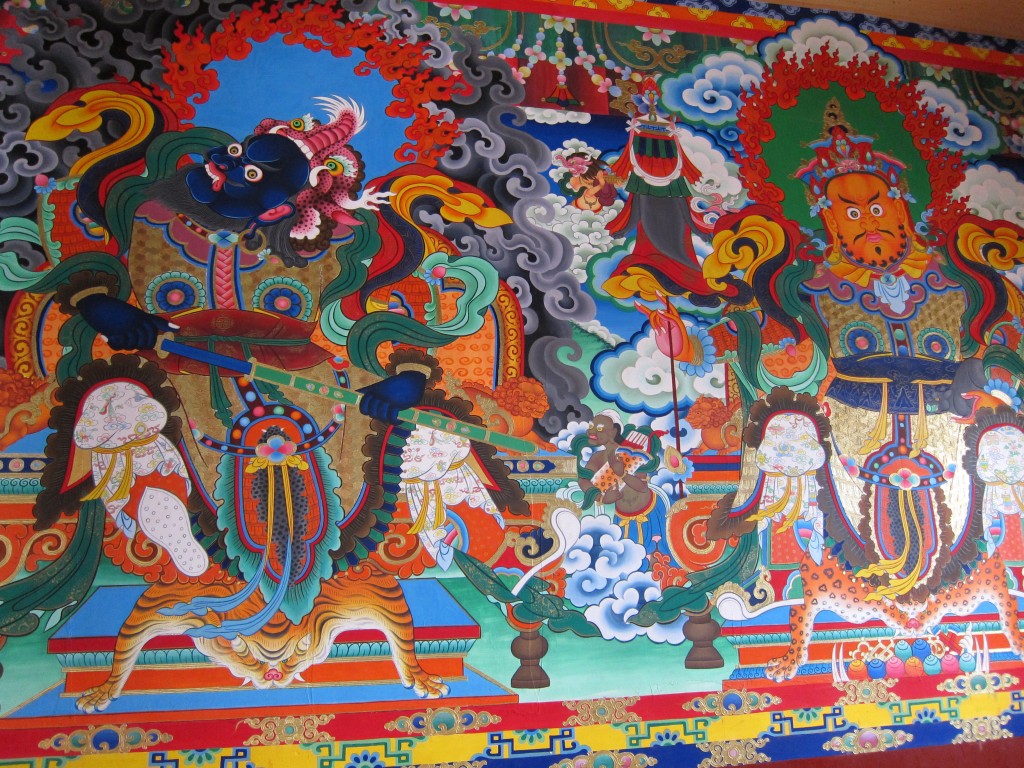
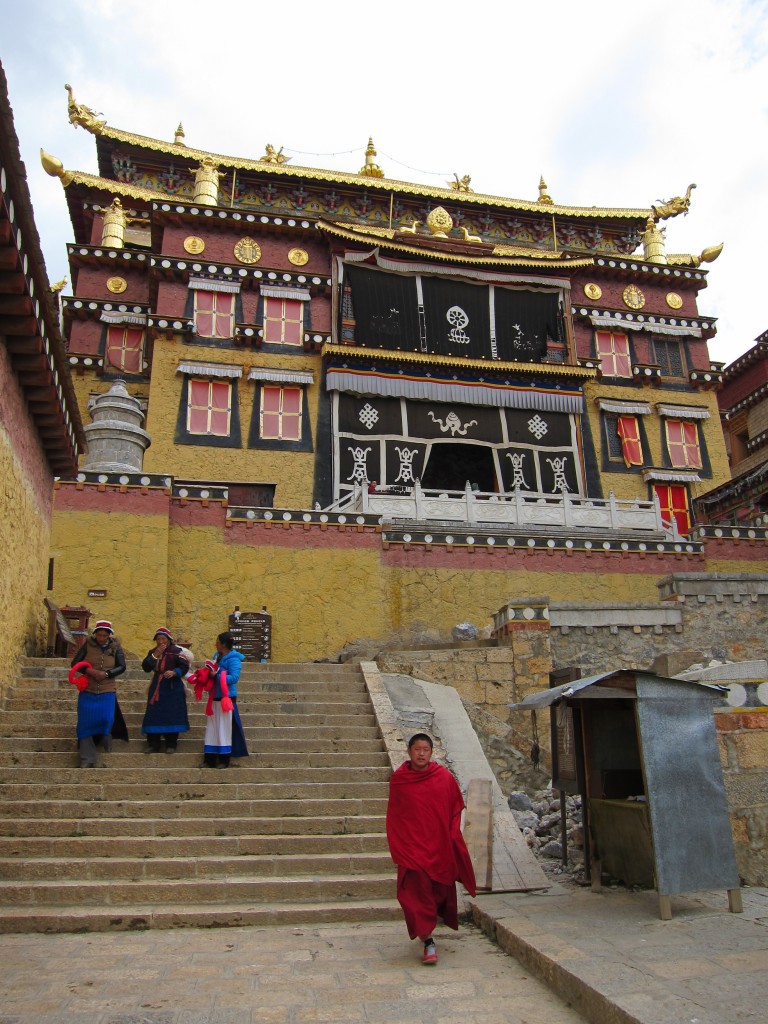
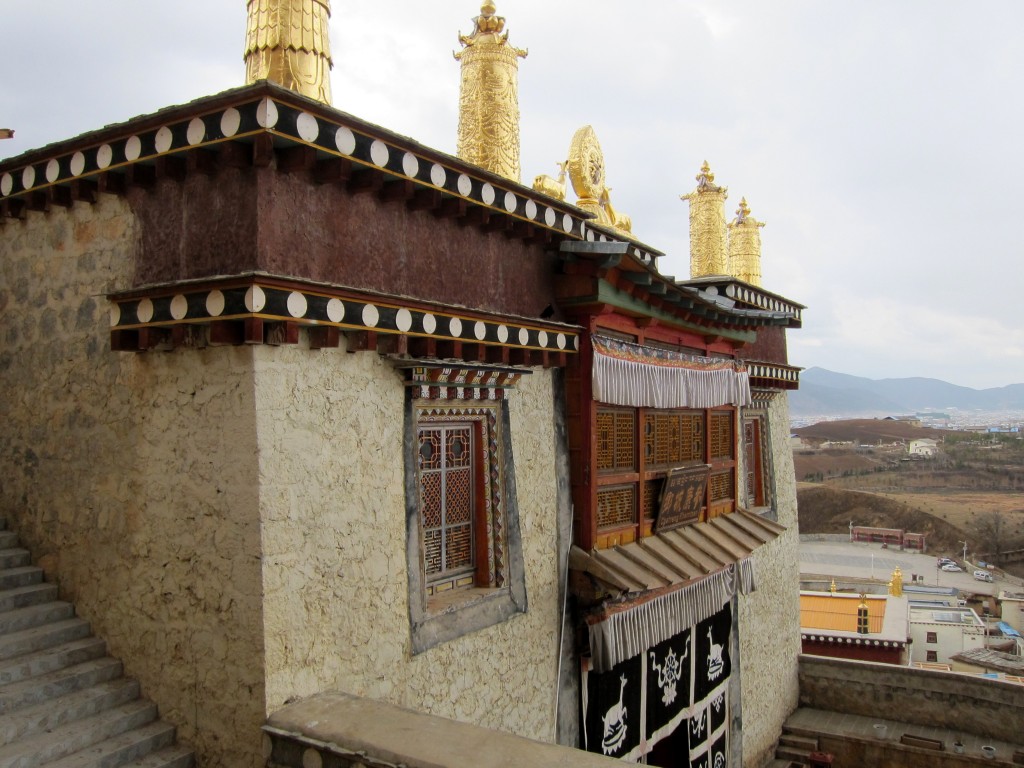
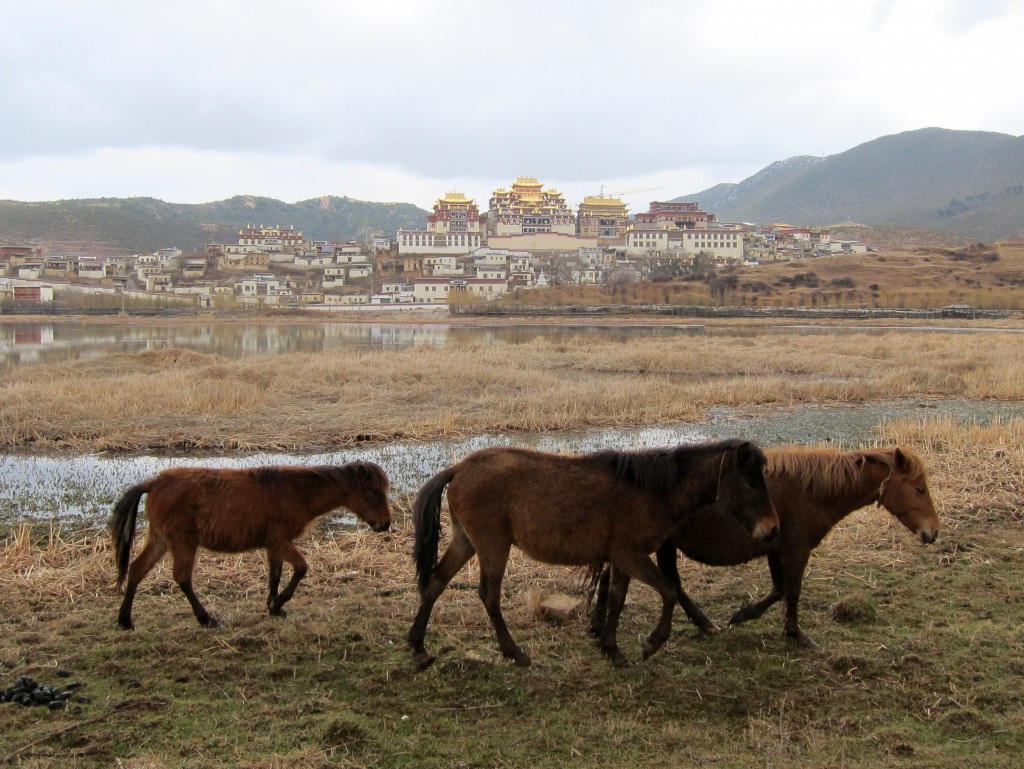
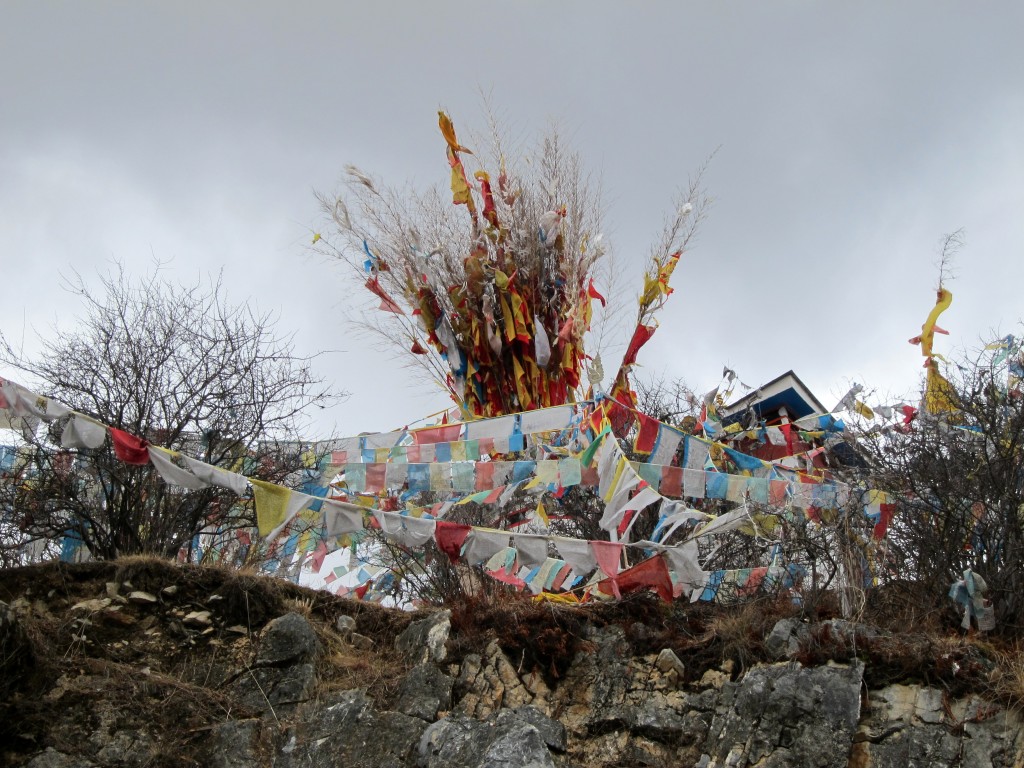
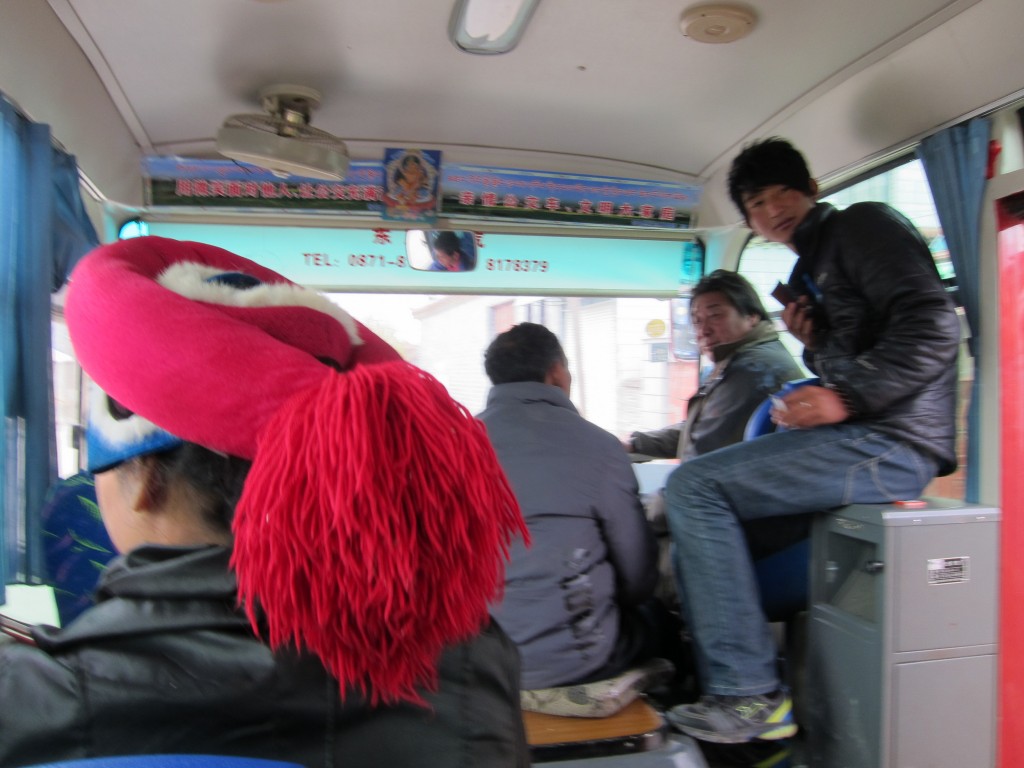
What a beautiful destination! I could comment on each and every photo. Idyllic indeed!
Thanks Jan! Can you believe that we ran into some western tourists in the visitor center as we were exiting who asked us if it was worth the $19 fee? And they apparently didn’t believe us when we said most definitely yes as they got on the same bus as us to go back into town!
What an absolutely gorgeous place! A shame you couldn’t take photos inside.
I bet the colors were beautiful. The colors on the doorways are fantastic. Patiently
waiting for more.
The doorways offer just a hint of the colors and decorations inside. We really couldn’t believe how lovely it was! More coming soon… 🙂
This is so beautiful – I love the scenes you captured!
Thanks! It was so lovely – the scenes presented themselves!
Wonderful post and images 🙂
InkMyTravel
Thanks!!
Gorgeous photos. This totally looks like the kind of town I could get lost in for days just wandering. That very first shot is a real winner. Nice!
Thanks! Just wait for my post on the town of Shangri-la. I think you’d like it best of anywhere in China. It’s a colder version of Luang Prabang.
Beautiful images. I’d love to visit someday… the narrow alleys, the colors, and all of the resident monks walking around look so captivating!
It was very high on our list of must-see sights in China. I’m so happy we finally got to go! Hope you get to see it before the region is too affected by tourism.
Would really love to visit. any idea what it cost to get there?
Victor, I do hope you get to visit. It’s such a special place! We flew to Shangri-la from Shanghai on a local airline and it was still quite expensive. But very worthwhile, in my opinion.